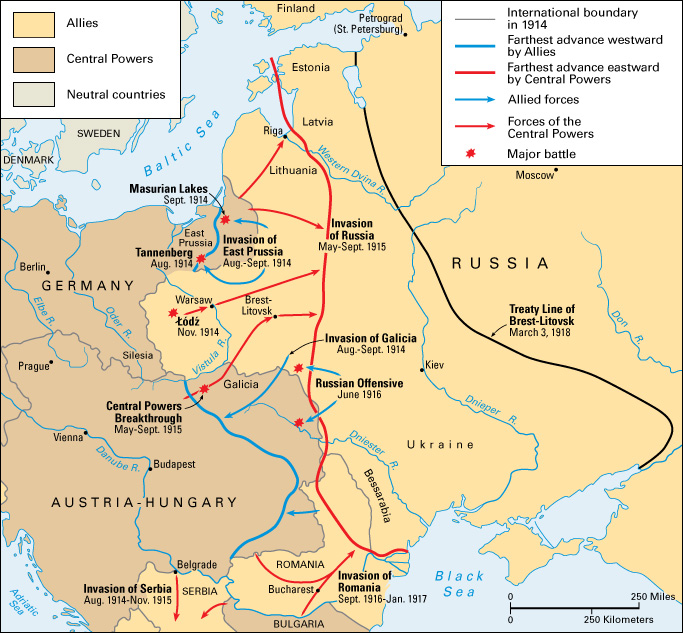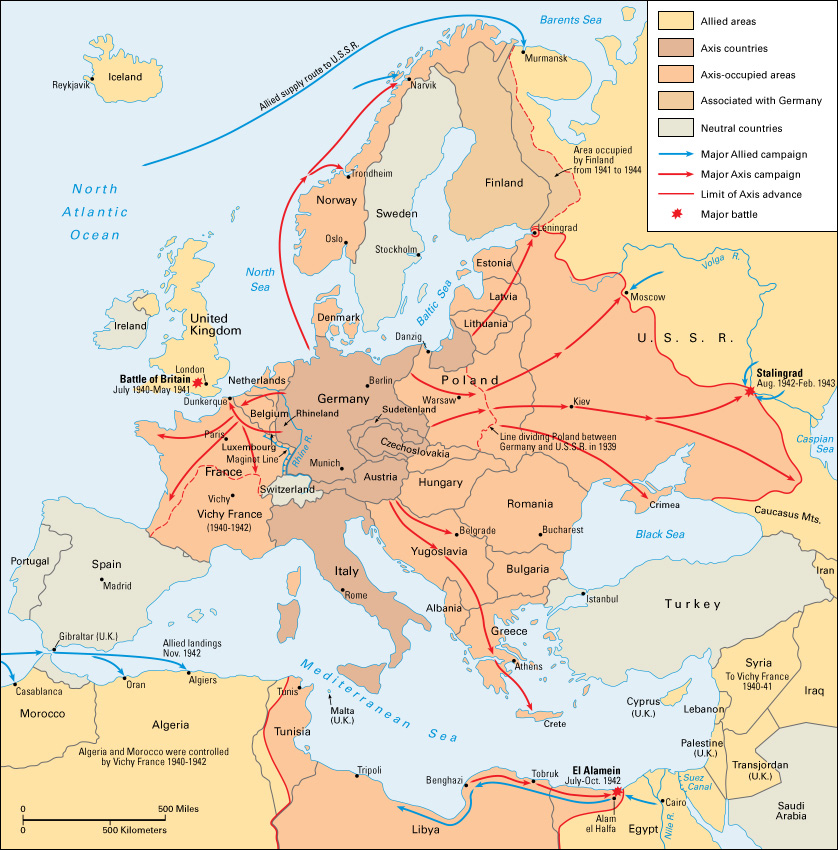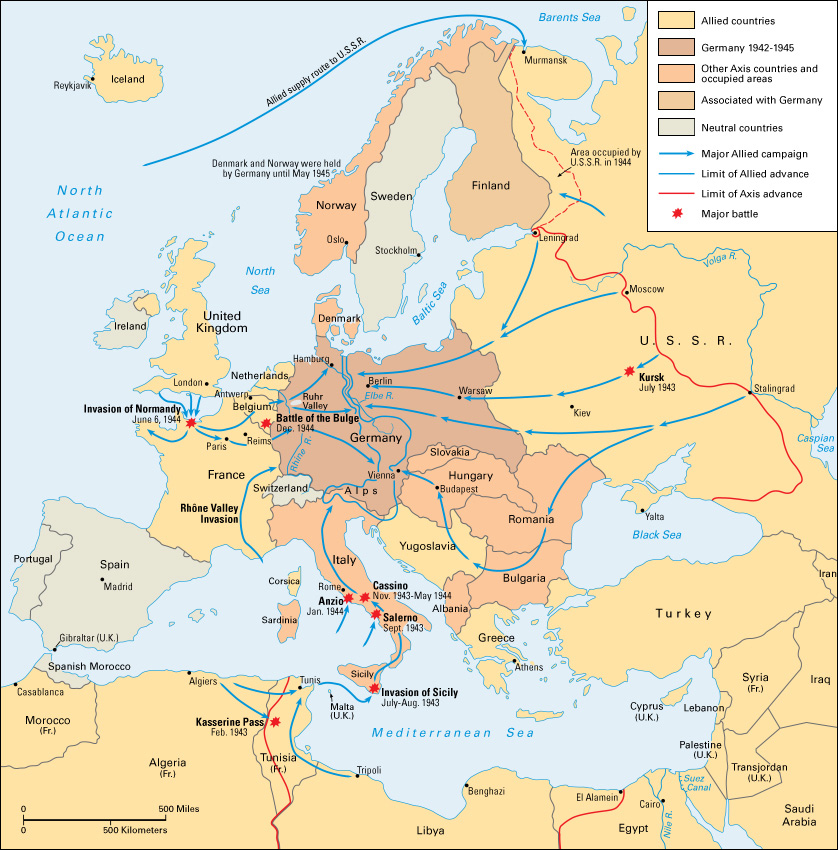Eastern Front commonly refers to battlefronts in eastern Europe during World War I (1914-1918) and World War II (1939-1945). In World War I, the Eastern Front divided the armies of Germany and Austria-Hungary against Russia and, briefly, Romania. In World War II, the Eastern Front divided mainly the armies of Germany and the Soviet Union. In both wars, the Eastern Front was just one of several battlefronts.
World War I.
The Eastern Front was created in August 1914 after Russian troops invaded East Prussia, a province of the German Empire (see Tannenberg, Battle of). German troops drove the Russians back, and, in early 1915, the fighting shifted to western Russia. To the south, Russian forces facing Austria-Hungary initially drove deep into Galicia (a region of present-day Poland and Ukraine). German and Austro-Hungarian counterattacks in the spring and summer of 1915 then drove the Russians back and advanced into Russian territory. Further offensives on the Eastern Front moved the lines hundreds of miles at a time. At its peak, the Eastern Front stretched nearly 1,000 miles (1,600 kilometers) from the Baltic Sea to the Black Sea. Within a couple of years, millions of soldiers had died fighting on the Eastern Front.

Romania sided with Russia after a successful Russian offensive in 1916. However, Germany attacked Romania and quickly destroyed most of the Romanian army. In late 1917, Communist revolutionaries took control of Russia, effectively ending the Russian war effort. Russia formally surrendered to Germany in March 1918, ending World War I on the Eastern Front (see Brest-Litovsk, Treaty of). In 1922, Russia joined with other territories to create the Soviet Union.
World War II.
In September 1939, German and Soviet troops invaded Poland. Germany and the Soviet Union, having signed a nonaggression pact, then divided Poland between them. Germany soon disregarded the pact, however, and—aided by thousands of Croatian, Hungarian, Italian, Romanian, and Slovak troops—invaded the Soviet Union in June 1941 (see Operation Barbarossa). The invasion created a massive 2,000-mile (3,200-kilometer) Eastern Front from the Baltic Sea to the Caspian Sea. Over the next few years, Germany and the Soviet Union fought devastating battles at Kyiv, Kursk, Leningrad (Saint Petersburg), Stalingrad (Volgograd), and other Soviet cities.

Soviet troops eventually gained the upper hand, driving the Germans out of the Soviet Union. The Eastern Front crumbled as Soviet forces drove the Germans back throughout eastern Europe. In early 1945, Soviet troops stormed across western Poland into Germany. They entered Berlin, the German capital, in late April. With Allied armies advancing from the west, Germany surrendered in May.

More than 10 million soldiers died fighting on the Eastern Front—more than on all other World War II fronts combined.
